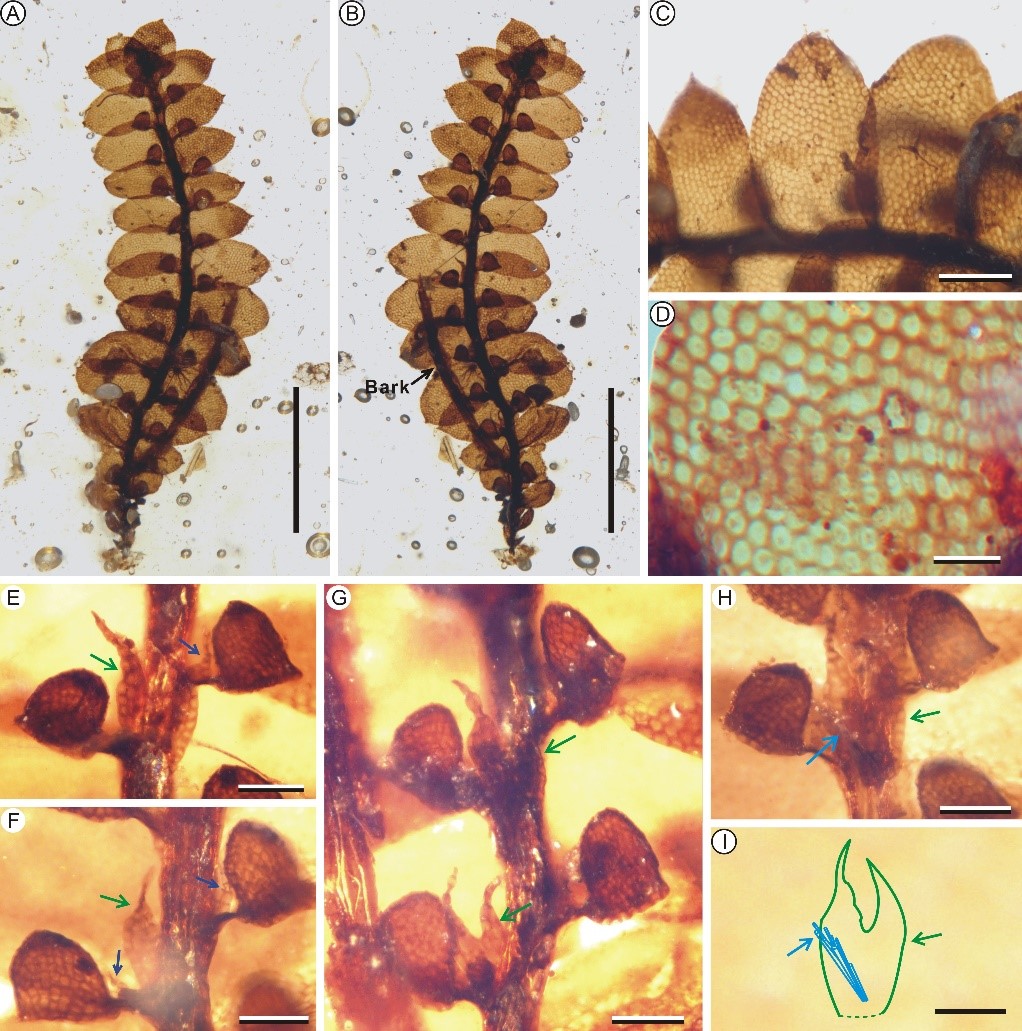Recent studies indicate increasing numbers of fossil organisms have been found in the Amber inclusions. However, few fossils have been documented for fossil liverworts in amber. Recently, a research team of the Mesozoic plants led by Prof. WANG Yongdong and Dr. LI Ya from Nanjing Institute of Geology and Palaeontology, Chinese Academy of Sciences (NIGPAS), cooperated with Prof. Harald Schneider from Xishuangbanna Tropical Botanical Garden, CAS and Prof. WU Pengcheng from Institute of Botany, CAS, have investigated the liverwort inclusions from the mid-Cretaceous Burmese amber.
They found a distinctive and anatomically preserved sterile branch of Frullania (Frullaniaceae, Porellales), and described it as F. partita sp. nov. after detailed comparisons with related extant and fossil species of Frullania. This research results have recently been published in the international geoscience journal Cretaceous Research.
This new species is mainly characterized by apically apiculate leaf lobes, helmet-shaped to campanulate water sacs situated in some distance to stem, lanceolate styli, and apically deeply bilobed underleaves carrying rhizoid bundles in their basal parts.
Recent molecular based studies introduced the hypothesis that the diversity of the predominantly epiphytic liverworts Porellales expanded during the Cretaceous Terrestrial Revolution (KTR) period around 125–80 Ma. Until now, the fossil record provides only insufficient support to elucidate this hypothesis.
Porellales comprise seven families, viz. Porellaceae, Goebeliellaceae, Lepidolaenaceae, Radulaceae, Frullaniaceae, Jubulaceae, Lejeuneaceae. Representatives of the Porellales are most common in Cenozoic amber, however, these liverwort inclusions in Cretaceous amber are relatively rare and usually consist of small fragments, rather than complete plants. So far, only a few taxa (3 families 4 genera 6 species) of Porellales have been described from the mid-Cretaceous Burmese amber.This new discovery contributes our understandings for the diversity aspects of Frullaniaceae (Porellales) of Burmese amber inclusions. The bark fragments connected to the branch provide the evidence that the fossil is an epiphyte.
This study was supported by the National Natural Science Foundation of China, and the Strategic Priority Research Program of the Chinese Academy of Sciences.

Morphology and anatomy of the sterile branch of Frullania partita sp. nov. from the mid-Cretaceous of Burmese amber

Reconstruction of Frullania partita sp. nov. (drawn by Ding-Hua Yang)
Download:
